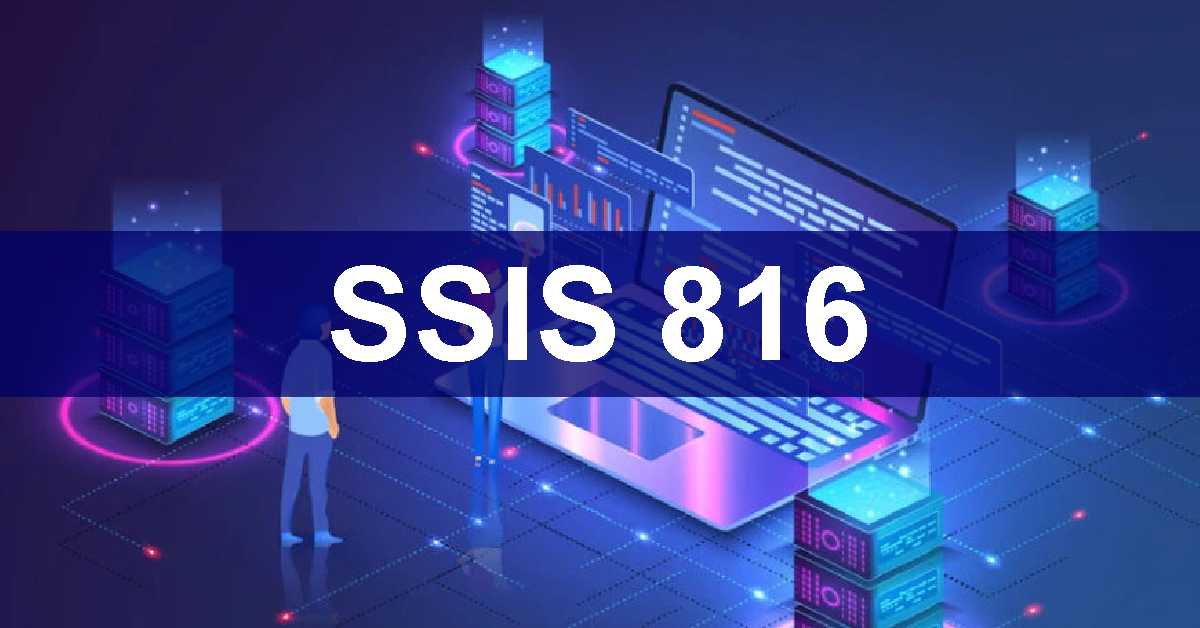Introduction
SSIS 816 is a powerful and versatile tool that revolutionizes the process of data integration. It simplifies the complex task of extracting, transforming, and loading data from various sources into a unified format. With its seamless integration capabilities, It has become a go-to choice for organizations seeking efficient and reliable data integration solutions.
Why Choose SSIS 816?
There are several compelling reasons why SSIS 816 is the preferred tool for seamless data integration:
1. Versatility
SSIS 816 supports a wide range of data sources, including databases, flat files, XML files, and even cloud-based platforms. This versatility allows organizations to integrate data from diverse sources effortlessly.
2. Scalability
SSIS 816 is designed to handle large volumes of data with ease. Its high-performance capabilities ensure that even massive datasets can be processed efficiently, making it suitable for organizations of all sizes.
3. Intuitive Visual Interface
One of the standout features of SSIS 816 is its user-friendly interface. The drag-and-drop functionality allows developers to create data integration workflows without the need for extensive coding knowledge. This intuitive interface streamlines the development process and reduces the learning curve.
4. Robust Data Transformation Capabilities
SSIS 816 offers a plethora of transformation tasks that enable users to manipulate data according to their specific requirements. Whether it’s filtering, sorting, aggregating, or joining, It provides a comprehensive set of tools to ensure data is transformed accurately.
5. Reliable Error Handling
Data integration processes can encounter errors, such as missing values or incompatible data types. SSIS 816 includes built-in error handling mechanisms that help identify and resolve these issues efficiently. This reduces the risk of data corruption and enhances data quality.
6. Extensive Connectivity Options
It supports a wide range of connectivity options, enabling seamless integration with various data sources and destinations. Whether it’s connecting to Microsoft SQL Server, Oracle, MySQL, or Salesforce, SSIS 816 has you covered.
7. Integration with Other Microsoft Tools
As part of the Microsoft SQL Server suite, SSIS 816 seamlessly integrates with other Microsoft tools, such as SQL Server Management Studio and Azure Data Factory. This integration allows for a unified data integration and management experience, leveraging the full potential of Microsoft’s ecosystem.
8. Enhanced Security Features
Data security is a top priority in any organization. This offers robust security features, including encryption, authentication, and authorization, ensuring that sensitive data remains protected throughout the integration process.
9. Comprehensive Logging and Monitoring
SSIS 816 provides extensive logging and monitoring capabilities, allowing developers to track the status and progress of data integration workflows. With real-time insights into the execution of packages, troubleshooting becomes easier, reducing downtime and improving overall efficiency.
10. Extensible and Customizable
A key strength of SSIS 816 is its extensibility. Developers can create custom components and tasks to extend its functionality and tailor it to the specific needs of their organization. This flexibility empowers users to adapt SSIS 816 to any data integration scenario.
A Seamless Integration Process with SSIS 816
Utilizing SSIS 816 for seamless data integration involves a five-step process:
1. Data Source Configuration
The first step is to configure the data sources from which data will be extracted. It supports a vast array of data sources, making it easy to connect to databases, APIs, or files.
2. Data Transformation
After extracting the data, SSIS 816 provides a range of data transformation tasks to manipulate and prepare the data for integration. This step ensures that the data is in the desired format and follows the necessary business rules.
3. Data Mapping
Data mapping is a crucial step in the integration process. It simplifies this process by providing a visual mapping interface that allows users to define the relationships between source and target data elements.
4. Data Integration and Loading
SSIS 816 excels in seamlessly integrating data from various sources into a unified format. Its powerful integration capabilities ensure that data is loaded accurately and efficiently into the desired destination, whether it be a database or a file.
5. Error Handling and Monitoring
SSIS 816’s robust error handling framework identifies and resolves any errors that may occur during the integration process. Additionally, its monitoring features provide real-time insights into the execution of workflows, enabling swift resolution of any issues.
Conclusion
SSIS 816 has revolutionized the world of data integration with its versatile features and seamless integration capabilities. Its user-friendly interface, robust transformation tasks, and extensive connectivity options make it an invaluable tool for organizations of all sizes. By leveraging SSIS 816, businesses can enhance data quality, improve efficiency, and unlock the full potential of their data assets. Embrace SSIS 816 and embark on a journey of seamless data integration today!

